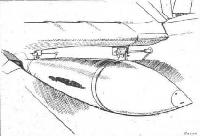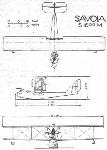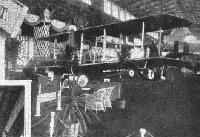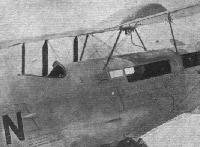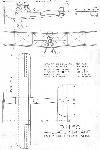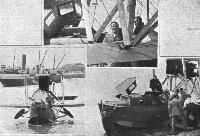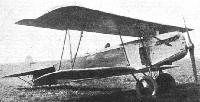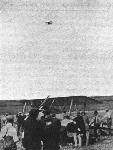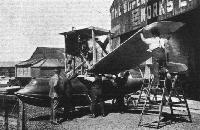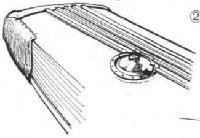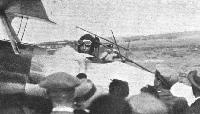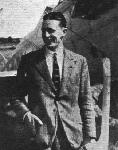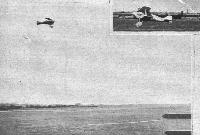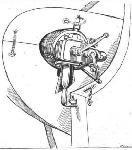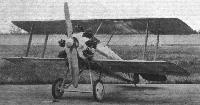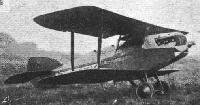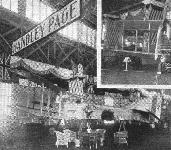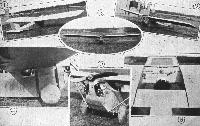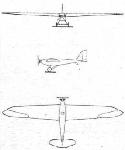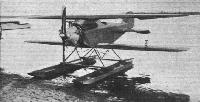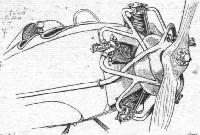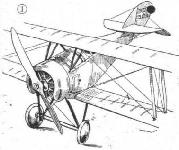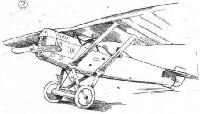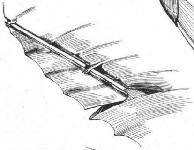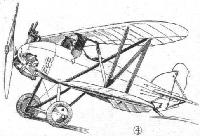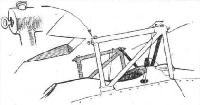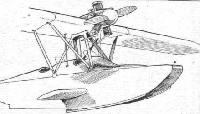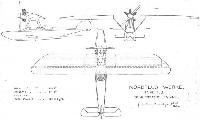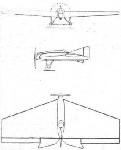Фотографии
-
PARIS TOKIO FLIGHT: The Breguet XIX Sesquiplan, which is the type of machine, fitted with a 400 h.p. Lorraine-Dietrich engine, Lieut. Pelletier d'Oisy is flying.
Самолёты на фотографии: Breguet Br.19 - Франция - 1922
-
THE BREGUET SESQUIPLAN: The new type and mounting of radiator, and below the fairing around the terminal of a bracing wire.
Самолёты на фотографии: Breguet Br.19 - Франция - 1922
-
Breguet Sesquiplan, Type XIX 450 hp. Renault
Самолёты на фотографии: Breguet Br.19 - Франция - 1922
-
Регистрационный номер: G-EBCG Mr. H. H. Perry, who on the D.H.9a (350 h.p. R.R.) secured third place in the Aerial Derby Handicap, getting away.
Самолёты на фотографии: De Havilland D.H.9A - Великобритания - 1918
-
BRITAIN AT I.L.U.G.: This set of photographs, kindly supplied by the S.B.A.C., shows some of the British exhibits at the Gothenburg International Aero Exhibition, which has just closed. The Fairey III D, with Napier "Lion."
Самолёты на фотографии: Fairey Fairey III - Великобритания - 1917
-
Регистрационный номер: G-AUBZ AIR SERVICES IN QUEENSLAND: On the left, the ancient D.H.4 "still going strong" with the Queensland Northern Territory Aerial Services, and, on the right, reconditioning the "4" with new 3-ply. "The climate shakes up the old 'buses during the summer," writes Mr. Cecil J. Hazlett, who is seen in the foreground.
Самолёты на фотографии: De Havilland D.H.4 - Великобритания - 1916
-
ON THE SAVOIA: Sketch showing the suspension of one of the large bombs under the root of the lower plane.
Самолёты на фотографии: SIAI S.16 / S.53 - Италия - 1919
-
THE SAVOIA S.16 BIS M: General arrangement drawings to scale.
Самолёты на фотографии: SIAI S.16 / S.53 - Италия - 1919
-
SOME DORNIER DETAILS: 1. The "window" in the pilot's cockpit of the "Delphin." 2. View from below of the steps of the "Delphin."
Самолёты на фотографии: Dornier Delphin - Германия - 1920
-
FOR THE AIR LEAGUE CHALLENGE CUP RACE ON BANK HOLIDAY: The Service Bristol Fighters (all 275 h.p. Rolls-Royce engines) lined up for the League Cup at Croydon before the start.
Самолёты на фотографии: Bristol F.2A/F.2B Fighter - Великобритания - 1916
-
BRITAIN AT I.L.U.G.: This set of photographs, kindly supplied by the S.B.A.C., shows some of the British exhibits at the Gothenburg International Aero Exhibition, which has just closed. The Vickers "Viking," with Napier "Lion."
Самолёты на фотографии: Vickers Viking / Type 54 - Великобритания - 1919
-
SOME DERBY MACHINES: 504 K.
Самолёты на фотографии: Avro Avro 504 - Великобритания - 1913
-
Регистрационный номер: G-EBFN [5], G-AUEY [5] The D.H.50 is a commercial aeroplane carrying four passengers, although the engine is a Siddeley "Puma" of 230 h.p. only. The cruising speed is about 100 m.p.h.
Самолёты на фотографии: De Havilland D.H.50 - Великобритания - 1923
-
Регистрационный номер: G-EBFN [5], G-AUEY [5] THE D.H.50: View of the cabin. Note the absence of wire bracing on the starboard side.
Самолёты на фотографии: De Havilland D.H.50 - Великобритания - 1923
-
Регистрационный номер: G-EBFN [5], G-AUEY [5] THE D.H.50: Tail and tail skid.
Самолёты на фотографии: De Havilland D.H.50 - Великобритания - 1923
-
Регистрационный номер: G-EBFN [5], G-AUEY [5] THE D.H.50: Side view.
Самолёты на фотографии: De Havilland D.H.50 - Великобритания - 1923
-
Регистрационный номер: G-EBFN [5], G-AUEY [5] THE D.H.50: Three-quarter rear view.
Самолёты на фотографии: De Havilland D.H.50 - Великобритания - 1923
-
THE D.H.50 - SOME CONSTRUCTIONAL DETAILS: 1 shows the steerable tail skid, with its rubber compression block springing. In 2 are shown the details of the tail trimming gear. 3 shows the deflector mounted outside the open starboard window. 4 streamline fairing over end of elevator layshaft.
Самолёты на фотографии: De Havilland D.H.50 - Великобритания - 1923
-
D.H.50 4-seater Biplane 250 hp Siddeley "Puma" Engine
Самолёты на фотографии: De Havilland D.H.50 - Великобритания - 1923
-
The Supermarine "Sea Eagle" at Sea View, I. of W.: The machine appears to have attracted considerable attention. On the right, standing on the wheel, is Mr. Hubert Scott-Paine, managing director of the Supermarine Works. Next to him is seen Lord Apsley, M.P., and behind him Capt. Biard, the Supermarine pilot.
Самолёты на фотографии: Supermarine Sea Eagle - Великобритания - 1923
-
GENERAL BRANCKER "AT SEA": On Sunday, August 5, Major-General Sir Sefton Brancker paid a visit to the Supermarine Works at Southampton, and was taken for a flight in the new "Sea Eagle." In the upper photograph, the Director of Civil Aviation is seen, with Capt. Biard, in the cockpit. On the right General Brancker is just stepping ashore from the machine, and on the left is shown the central portion of the "Sea Eagle" as she appears when at rest on the sea. Note the wheels lifted clear of the water. On August 14 a flight was made, also with General Brancker as passenger, from Southampton to Cherbourg, over the new route which is to be opened shortly.
Самолёты на фотографии: Supermarine Sea Eagle - Великобритания - 1923
-
One of the Schneider Cup challengers under test: The American Curtiss-Navy Racer, type C.R.3, with 400 h.p. Curtiss D.12 engine, on which Lieut. Irvine established, on June 30, what is claimed to be a world's record for seaplanes by averaging, over a 4.26 miles course, 175.3 m.p.h.
Самолёты на фотографии: Curtiss CR / R-6 - США - 1921
-
BRITAIN AT I.L.U.G.: This set of photographs, kindly supplied by the S.B.A.C., shows some of the British exhibits at the Gothenburg International Aero Exhibition, which has just closed. The Siddeley Siskin Mark II, with Siddeley "Jaguar."
Самолёты на фотографии: Armstrong Whitworth Siskin - Великобритания - 1921
-
The Fokker C.IV: Three-quarter front view.
Самолёты на фотографии: Fokker C.IV / DC.I - Нидерланды - 1923
-
The Fokker C.IV: Three-quarter rear view.
Самолёты на фотографии: Fokker C.IV / DC.I - Нидерланды - 1923
-
FOKKER AT GOTHENBURG: On the left, a portion of the new Fokker undercarriage, in which the axle is free to travel laterally to a certain extent. This feature is stated to effect a great saving of tyres. In the centre the gunner's seat in the Fokker C.IV. The seat can be shifted fore and aft on the longitudinal tubes, and by reversing it, as shown by dotted lines, the seat is lowered so as to bring the gunner's head below deck. On the right is shown the mounting of the radiator, which can be withdrawn entirely into the fuselage.
Самолёты на фотографии: Fokker C.IV / DC.I - Нидерланды - 1923
-
Регистрационный номер: G-EASJ SOME DERBY MACHINES: Boulton and Paul P.9.
Самолёты на фотографии: Boulton Paul P.6 / P.9 - Великобритания - 1918
-
JUNKERS AT GOTHENBURG: (Junkers T 19) 1 is a perspective view of the small school machine, type T, which is fitted with a six-cylinder vertical air-cooled Junkers engine. 2 details of the undercarriage. 3 the fan which is used for cooling the air-cooled engine. 4 access to the cockpit of the type T is gained through a triangular door. 5 a typical strut assembly.
Самолёты на фотографии: Junkers T 21 / Ю-21 / J 22 / T 26 - Германия - 1923
-
Three-quarter front view of the Aero type A.10 commercial aeroplane.
Самолёты на фотографии: Aero A.10 - Чехословакия - 1922
-
Регистрационный номер: G-EAKI [4] The Avro Baby passing Croydon on its second lap in the Aerial Derby, whilst below is the Sopwith-Hawker machine still awaiting its turn to start under its handicap time.
Самолёты на фотографии: Avro Baby / Type 534 - Великобритания - 1919Sopwith Schneider 1919 - Великобритания - 1919
-
BRITAIN AT I.L.U.G.: This set of photographs, kindly supplied by the S.B.A.C., shows some of the British exhibits at the Gothenburg International Aero Exhibition, which has just closed. The Avro "Aldershot," with 1,000 h.p. Napier "Cub."
Самолёты на фотографии: Avro Aldershot / Type 549 - Великобритания - 1922
-
THE AERIAL DERBY: Hamersley, the winner of the Derby Handicap, crossing the line on his Avro 200 Viper machine.
Самолёты на фотографии: Avro Type 552 - Великобритания - 1921
-
One of the Schneider Cup defenders: The Supermarine "Sea Lion," with 450 h.p. Napier "Lion" engine, being got ready for her tests at the Southampton works of the Supermarine Company.
Самолёты на фотографии: Supermarine Sea Lion / Sea King - Великобритания - 1919
-
BRITAIN AT I.L.U.G.: This set of photographs, kindly supplied by the S.B.A.C., shows some of the British exhibits at the Gothenburg International Aero Exhibition, which has just closed. The Blackburn Torpedoplane, with Napier "Lion."
Самолёты на фотографии: Blackburn Swift T.1 / Dart T.2 - Великобритания - 1920
-
AT GOTHENBURG: Some Swedish constructional details. The padded nose of the floats on the Hansa-Brandenburg seaplane.
Самолёты на фотографии: Hansa-Brandenburg W.29 / W.33 - Германия - 1918
-
THE "WREN" LIGHT 'PLANE, FITTED WITH 3 H.P. A.B.C. ENGINE: Three-quarter front view.
Самолёты на фотографии: English Electric Wren - Великобритания - 1923
-
Регистрационный номер: J6973 The "Wren" Light 'Plane: Three-quarter rear view.
Самолёты на фотографии: English Electric Wren - Великобритания - 1923
-
The "Wren" Light 'Plane 3 hp A.B.C. Engine
Самолёты на фотографии: English Electric Wren - Великобритания - 1923
-
SOME DORNIER DETAILS: 3. The cockpit and centre-section of the "Libelle." 4. When folded, the wings are held in place by quick-release fittings on the trailing edge. 5. Details of 4.
Самолёты на фотографии: Dornier Do.A Libelle / Spatz - Германия - 1921
-
Регистрационный номер: G-EAYN BRITAIN AT I.L.U.G.: This set of photographs, kindly supplied by the S.B.A.C., shows some of the British exhibits at the Gothenburg International Aero Exhibition, which has just closed. The Gloucestershire "Grouse," with B.R.2.
Самолёты на фотографии: Gloster Grouse - Великобритания - 1923
-
THE GLOUCESTERSHIRE AIRCRAFT COMPANY'S NEW RACER: The "Gloster," with Napier "Lion," is a "cleaned-up" version of the famous "Bamel," and it will be noticed that, as regards external appearance, the main alteration is formed by the disappearance of the petrol tank from the cabane.
Самолёты на фотографии: Gloster I - III - Великобритания - 1923
-
Mr. L. L. Carter, the pilot of the Aerial Derby winning "Gloster," immediately after "coming to earth." Both he and his machine, as may be noticed, were smothered with oil from a leaking oil pipe.
Самолёты на фотографии: Gloster I - III - Великобритания - 1923
-
THE AERIAL DERBY: Mr. L. L. Carter, the pilot of the 200 m.p.h. "Gloster," after the race
Самолёты на фотографии: Gloster I - III - Великобритания - 1923
-
THE AERIAL DERBY, 1923: The winner, Mr. L. L. Carter, finishing on the "Gloster" (450 Napier "Lion") at a mean speed of 192-4 m.p.h. Inset, on the right, the "Gloster" is seen starting.
Самолёты на фотографии: Gloster I - III - Великобритания - 1923
-
Регистрационный номер: D-284 A Stahlwerk Mark R.III lands in Unter den Linden: On July 7 this machine was successfully landed in front of the Opera House in Berlin.
Самолёты на фотографии: Rieseler R.III / R.IV - Германия - 1922
-
How the planes are carried when folded on the Stahlwerk Rieseler type R.III. It scarcely seems fair to the engine to sling the weight of a wing from the outer end of a cylinder.
Самолёты на фотографии: Rieseler R.III / R.IV - Германия - 1922
-
Регистрационный номер: G-EAKI [4] RUNNING-UP THE SOPWITH-HAWKER-JUPITER FOR THE AERIAL DERBY: A front view of this new speed machine appeared exclusively in "Flight" last week.
Самолёты на фотографии: Sopwith Schneider 1919 - Великобритания - 1919
-
Регистрационный номер: G-EAKI [4] THE AERIAL DERBY: The Sopwith-Hawker machine gets away. This 400 h.p. Jupiter-engined 'plane, piloted by Flight Lieut. W. H. Longton, was the second fastest over the course.
Самолёты на фотографии: Sopwith Schneider 1919 - Великобритания - 1919
-
Регистрационный номер: G-EAKI [4] A "DERBY DARK HORSE": The speedy-looking Sopwith-Hawker racing biplane which is expected to do great things in Monday's Aerial Derby. It is fitted with a 400 h.p. Bristol "Jupiter," and has a wing span of only 21 feet.
Самолёты на фотографии: Sopwith Schneider 1919 - Великобритания - 1919
-
THE RACE FOR THE KING'S CUP: Photographs of the competing machines. Martinsyde F.6 (200 h.p. Wolseley "Viper").
Самолёты на фотографии: Martinsyde F.4A / F.6 / A - Великобритания - 1919
-
THE FARMAN LIGHT 'PLANE "MOUSTIQUE": The machine shown above, which won the "Petit Parisien" Grand Prix on July 15, is the latest development of the original "Moustique." It is fitted with either of the two following engines: (1) Sergent, 4-cyl. (55 by 80), 14 h.p., with geared airscrew turning at 4,550 r.p.m. for 3,500 of engine. (2) Salmson, 3-cyl. (70 by 86), 12 h.p. at 1,800, or 16 h.p. at 2,400 r.p.m. Its chief characteristics are: Span, 34 ft. 6 ins.; o.a. length, 18 ft. 6 ins.; height, 7 ft. 6 ins.; area, 161-4 sq. ft.; weight empty, (1) 253-5 lbs., or (2) 231-5 lbs.; speed, 49-7 m.p.h.; duration, with 44 lbs. of fuel, 7 hours.
Самолёты на фотографии: Farman Moustique - Франция - 1919
-
Регистрационный номер: N143 BRITAIN AT I.L.U.G.: This set of photographs, kindly supplied by the S.B.A.C., shows some of the British exhibits at the Gothenburg International Aero Exhibition, which has just closed. The Handley Page "Hanley," with Napier "Lion."
Самолёты на фотографии: Handley Page Hanley/H.P.19 / Hendon/H.P.25 - Великобритания - 1922
-
THE PONCELET LIGHT 'PLANE: At rest and in flight.
Самолёты на фотографии: Poncelet Castar / Vivette - Бельгия - 1921
-
THE A.N.E.C. LIGHT 'PLANE, 700 c.c. BLACKBURNE ENGINE: 1, Three-quarter rear view. 2, Three-quarter front view. 3, Front view showing dihedral. 4, View under the wing, showing clear field of vision obtained. 5, The engine mounting and undercarriage. The engine is inverted. The wheels are entirely of wood, and weigh but 4 lbs. 2 oz. each. 6, Looking into the cockpit from above. The triangular section spar contains the petrol tank. A transparent cover is placed over the cockpit when the machine is flying.
Самолёты на фотографии: ANEC I / II - Великобритания - 1923
-
LIGHT 'PLANE FROM VAUVILLE: A power-driven Dewoitine.
Самолёты на фотографии: Dewoitine D.7 - Франция - 1923
-
The Caspar U.I cantilever biplane: This machine can be dismantled, without using a single tool, by four men in 1 min. 10 secs. The engine is mounted on a swivelling mount, somewhat after the fashion patented by Boulton and Paul, Ltd.
Самолёты на фотографии: Caspar U.1 - Германия - 1922
-
THE CASPAR SEAPLANE: Details of float attachment.
Самолёты на фотографии: Caspar U.1 - Германия - 1922
-
THE CASPAR TYPE U.l SEAPLANE: Some constructional details. The whole of the machine can be dismantled without the use of tools. Our sketches show the details of the folding tail plane. When a trap door in the bottom of the fuselage is opened the lever A can be pulled down, and thereby releases the bayonet joint BC. The tail is then free to be swung upwards, as the elevator tube has a universal joint at E. Short pegs or dowels, D, take the shear at leading and trailing edges when the tail is spread.
Самолёты на фотографии: Caspar U.1 - Германия - 1922
-
THE UDET MONOPLANE: On the left, a view from above, and on the right a front view showing the low wing position.
Самолёты на фотографии: Udet U-6 / U-10 - Германия - 1923
-
ON THE UDET MONOPLANE: This sketch shows the unusual exhaust collector ring into which the gases are passed tangentially, and from which they emerge in the same manner, through a single long exhaust pipe on the starboard side.
Самолёты на фотографии: Udet U-6 / U-10 - Германия - 1923
-
Udet Two-seater 55/60 hp Siemens Engine
Самолёты на фотографии: Udet U-6 / U-10 - Германия - 1923
-
AT GOTHENBURG: Some of the Swedish machines: "Tummeliten," a school biplane with rotary engine.
Самолёты на фотографии: FVM O-1 Tummelisa - Швеция - 1920
-
AT GOTHENBURG: Some of the Swedish machines: The monoplane single-seater fighter, J.23, which has a 185 h.p. B.M.W. engine.
Самолёты на фотографии: FVM J-23 / J-24 - Швеция - 1923
-
AT GOTHENBURG: Some Swedish constructional details. The very small slotted aileron of the J.23.
Самолёты на фотографии: FVM J-23 / J-24 - Швеция - 1923
-
AT GOTHENBURG: Some of the Swedish machines: The Nordiska Phoenix school biplane, with Bristol "Lucifer" engine.
Самолёты на фотографии: Nordiska Phoenix biplane - Швеция - 1923
-
AT GOTHENBURG: Some Swedish constructional details. The folding hinge and aileron cables on the Nordiska Phoenix.
Самолёты на фотографии: Nordiska Phoenix biplane - Швеция - 1923
-
AT GOTHENBURG: Some of the Swedish machines: The two-seater fighter, type S.21, which is fitted with a 230-300 h.p. Maybach engine.
Самолёты на фотографии: FVM S-21 - Швеция - 1922
-
AT GOTHENBURG: Some Swedish constructional details. Unusual construction of the rudder of S.21.
Самолёты на фотографии: FVM S-21 - Швеция - 1922
-
THE CASPAR MONOPLANE THREE-SEATER: The machine taking off, and below side view on the ground inset, in flight.
Самолёты на фотографии: Caspar CLE.11 - Германия - 1923
-
THE CASPAR COMMERCIAL MONOPLANE: 1 Shows the arrangement of the rubber shock absorbers on the end of the wing-section fairing over the axle. An aileron crank lever is shown in 2, while 3 is a perspective view of the machine as she was exhibited - on a steep left-hand banked turn.
Самолёты на фотографии: Caspar CLE.11 - Германия - 1923
-
Caspar Monoplane Type C.L.E.II 80 hp Siemens Engine
Самолёты на фотографии: Caspar CLE.11 - Германия - 1923
-
THE BOULTON AND PAUL "BODMIN": This machine has several very interesting features, chief of which Is the central placing of the engines (Napier "Lions") in the fuselage, with drive to four propellers mounted between the planes.
Самолёты на фотографии: Boulton Paul Bodmin / P.12 - Великобритания - 1922
-
The Dietrich-Gobiet sporting two-seater.
Самолёты на фотографии: Dietrich DP.I Sperber - Германия - 1922
-
The top plane of the Dietrich-Gobiet two-seater is attached to the N-struts by quick-release fittings.
Самолёты на фотографии: Dietrich DP.I Sperber - Германия - 1922
-
THE NORDFLUG FLYING BOAT: Note the wing-tip ailerons.
Самолёты на фотографии: Nordflug FB.1 - Германия - 1923
-
THE NORDFLUG TYPE F.B.I: Owing to a strike this machine was finished only under great difficulties, which explains the somewhat inferior finish.
Самолёты на фотографии: Nordflug FB.1 - Германия - 1923
-
Nordflug-Werke Type F.B.I. 50 hp Siemens Engine.
Самолёты на фотографии: Nordflug FB.1 - Германия - 1923
-
THE DEWOITINE TWO-SEATER GLIDER: A "thumbnail" sketch from Vauville.
Самолёты на фотографии: Dewoitine P-1 - P-4 - Франция - 1922
-
THE DEWOITINE TWO-SEATER GLIDER: Shown diagrammatically the way in which the camber and incidence of the wing are altered.
Самолёты на фотографии: Dewoitine P-1 - P-4 - Франция - 1922
-
THE ILL-FATED THOMAS GLIDER: This rough sketch gives a fair idea of the lines of the machine.
Самолёты на фотографии: Thomas glider - Франция - 1923
-
THE ILL-FATED THOMAS GLIDER: A plan view of the tail.
Самолёты на фотографии: Thomas glider - Франция - 1923
-
LIGHT 'PLANE FROM VAUVILLE: The tailless "Simplex."
Самолёты на фотографии: Arnoux (Simplex) tailless monoplane - Франция - 1923
-
TWO VIEWS OF THE AERO A.18 WITH 185 H.P. B.M.W.IIIa ENGINE: In spite of its low power this machine has a very good performance.
Самолёты на фотографии: Aero A.18 / A.20 - Чехословакия - 1923
-
Aero "A.18" 185 hp. B.M.W. Engine
Самолёты на фотографии: Aero A.18 / A.20 - Чехословакия - 1923
Статьи
- Flight






